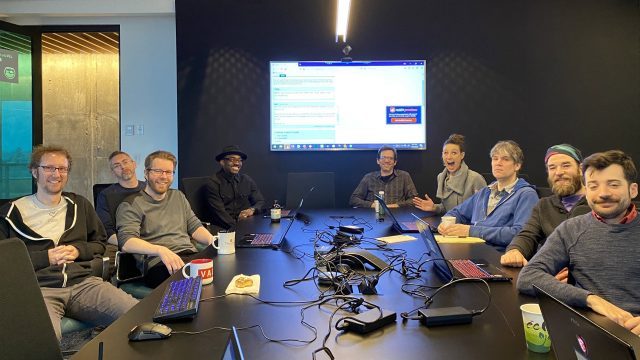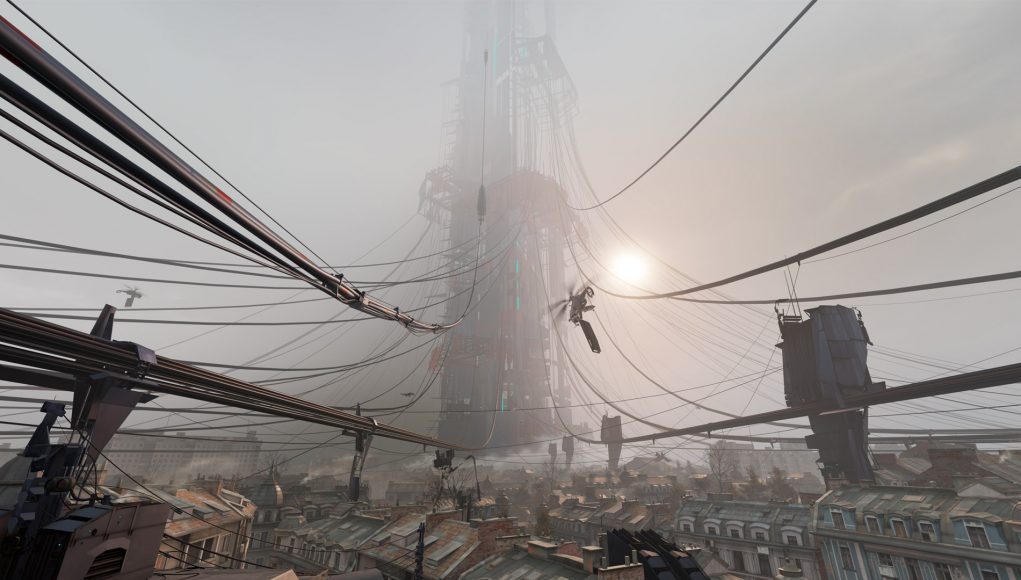Today during a Q&A session with Valve developers working on Half-Life: Alyx, the group confirmed that the development team behind the title is the largest to have ever worked on any Valve game.
Responding to a question regarding how many people are working on Half-Life: Alyx, the company said the game’s development team is the “largest single team we’ve ever had at Valve.” It was further revealed that the current size of the team sits at around 80 people which is certainly a large team compared to the size of most VR game studios today, but not particularly large relative to teams working on non-VR AAA titles at other studios. Still, Valve is known for punching above its weight class thanks to its top-notch talent, and the company maintains that Half-Life: Alyx will but a full fledged game.
Valve developers Robin Walker, Jamaal Bradley, David Feise, Greg Coomer, Corey Peters, Erik Wolpaw, Tristan Reidford, Chris Remo, Jake Rodkin, and Kaci Aitchison Boyle represented the larger Half-Life: Alyx dev team during the Q&A. They also answered a handful of questions regarding the production of the game.

We’ve pulled out some of the most interesting snippets about the game’s development here, but you can dig through the entirety of the responses over at the Q&A on Reddit.
On sound design and audio tech:
Dave here (Sound Designer) – A short and incomplete list of audio features we’ve added or improved for HL:A
- Soundscape system improved to be more fully integrated with the audio system as a whole.
- Our music system is new.
- Numerous Steam Audio improvements.
- Huge amount of work on the lower level audio systems.
- New tools for mixing and implementing sounds.
From a Sound Design perspective we’ve had to change how we think about the sounds we make and implement. A lot of things are the same as making a traditional game, good art/sound is good in VR as well, but there are new factors as well. A main one for me was figuring out ways of making environments sonically interesting for players who want to take their time and explore, which happens much more frequently in VR.
We’re using Steam Audio HRTF, DSP, and occlusion in HL:A. Having the SA development team in the same building has been really beneficial to the audio team since we’ve been able quickly iterate with them on feature requests and performance issues.
On writing and music:
We’ve never been able to figure out where the rumors of us falling out with [Marc Laidlaw, a writer on the original Half-Life games] came from, because there’s no truth to it. He’s been super generous with his time throughout the development of HL:A, answering many questions from Erik, Jay, and Sean as they hammered away on the story. As is always the case with Marc, we send him an email, and he sends us a response, and then roughly 40 more replies to his own email.
Several of the HL:A team members worked on HL1. There are some things we think we did better in HL1 than HL2, so we did go back to look at it again. As an example of that, the soldier AI in HL1 was something we looked at carefully during the development of the Combine Soldiers in HL:A.
Music on HL:A is being done by Mike Morasky (Portal 2, TF2, more!), and I know he’s talked with Kelly quite a bit about his approach to the music of Half-Life. So you’ll probably hear some of that come through but in Mike’s unique style.
Why Half-Life: Alyx won’t show the player’s arms:
We don’t render arms due to our experiences with playtesting—briefly, we found that players themselves don’t notice them missing (spectators do, obviously), and they don’t like them obscuring their view.
We actually simulate invisible arms though, which connect from your hands back up to your HMD, and we use those to detect impossible things, like completely closing a drawer over your wrist.
On the upgraded Source 2 engine and Hammer modding tools:
This is Corey, a level designer here. Hammer in Source 2 has been overhauled from the ground up. Everything from how geometry is built and textured to how asset creation is done has been improved to increase the speed and ease at which we can build and iterate on levels.
One big feature for us on HL:A was the addition of a system similar to layers, where individual map files from multiple level designers, environment artists, and sound designers are combined into a single map. This had a huge impact on how many disciplines could get their hands into each map, which resulted in a much denser level of content throughout the game.
We’re not currently planning on shipping a full SDK [though the company has promised it will release new modding tools for Half-Life: Alyx]. We’d really like to release one at some point, but it’s a ton of work because Source 2 is a new toolset, much of which hasn’t been previously released. Any time we spend on it now is also time we could be spending on polishing the game itself, which we think is more important. As a result, we thought it wasn’t appropriate to promise anything before release.
Generally, this is how we’ve done SDKs in our previous Source 1 titles as well—making the game takes precedence, and after that’s done, we start looking at what’s next.
The Q&A is still ongoing and we’ll be keeping our eye out for more info from the team. For more on Half-Life: Alyx, check out our coverage of all the details surrounding the game’s announcement:
More on Half-Life: Alyx
- ‘Half-Life: Alyx’ Trailer Revealed, Release Date Set for March 2020
- First Look: ‘Half-Life: Alyx’ Screenshots Are Classic Valve, with a Decade More Detail
- Valve’s Gabe Newell: ‘We’re excited to return to Half-Life, VR has energized the studio’
- ‘Half-Life: Alyx’ Will Run on All SteamVR Headsets, be Free for Index Owners
- Source 2 Tools Will Ship with ‘Half-Life: Alyx’ for VR Content from the Modding Community







